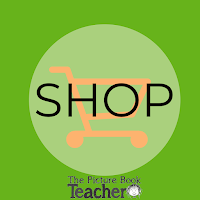It is the first day of school and Sarah really does not want to go! She has come up with many excuses why she shouldn't go to school on the first day, but Mr. Hartwell won't let her miss. He demands that she get out of bed and get dressed and then he drives her to school. Once Sarah gets to school she is greeted by the principal and taken to her classroom.
I wonder how Sarah's first day of school will turn out?
This is obviously a great book for the first day of school, students will identify and connect with so many parts of it. Use the below ideas, examples and sample questions to help create a meaningful lesson for this wonderful story.
Reading level: 2.6
Theme/subject: School, confronting fears,
Genre: Humorous fiction
Suggested vocabulary/phrases:
jitters, snapped up, trudged, cold and clammy
Reading skills and
strategies:
- Asking questions – these are just possible questions or wondering from either the student or teacher
- Before
- I wonder what jitters means.
- I wonder why she is so afraid.
- I wonder if she will go to school.
- During
- I wonder if she will get out of bed.
- I wonder what grade she is in.
- I wonder if her teacher will make her feel better.
- I wonder why she has that kind of lunch box.
- After
- I wonder why the author made us think the character was a child.
- I wonder how she will be as a teacher.
**Remember to have
your students answer/reflect their questions.
- Author's point of view – third person – she, her
- Author's purpose – to entertain
- Evidence
- The author made us think it was a child afraid to go to school.
- The teacher had a funny lunch box.
- The illustrations were silly when they were “looking for her”.
- Beginning, middle, end – the most important event from each
- Beginning – Sarah wouldn’t get out of bed to go to school.
- Middle – Sarah finally got ready for and went to school.
- End – Sarah was introduced to her new class.
- Cause and effect
1.Why did Sarah have the jitters?
Because it was the first day of school
2.Why did Sarah hate her new school?
Because she was starting a new school all
over again.
3.Why did Sarah think it was going to
be hard at her new school?
Because she wasn’t going to know anyone.
4.Why did Sarah think everyone would
think she was lucky?
Because was at home in bed and not at
school.
5.Why did Mr. Hartwell have to be
stern with Sarah?
Because she wouldn’t get ready for school.
6.Why did Sarah slump down in the car?
Because the principal was coming over to the
car.
- Character analysis - describe character {looks like, feelings, thoughts, character, how others think/see the character}
- Character changes –
- In the beginning – Sarah didn’t want to go to school because she thought it was going to be hard. Sarah was not happy.
- In the end – Sarah finally made it to school and she looks like she might be happy.
- Classify & categorize
- Classify – Different feelings on the first day of school.
- Categorize – Positive feeling, Negative feelings. Nervous and Excited, Happy and sad, etc.
- Compare & contrast
- Your morning the first day of school and Sarah’s morning the first day of school.
- Your teacher’s morning to Sarah’s morning.
- Connections
- Text-to-self
- Feeling jittery on the first day.
- Not wanting to get out of bed.
- Text-to-text – anything about starting school and feelings
- The Black Lagoon books – class or teacher
- The New Bear at School
- Don’t Eat the Teacher
- Little Cliffs First Day of School
- Drawing conclusions & inferencing –
- As you read the story who do you think the story is about?
- Text clues – the illustrator draws the picture so we can’t see Sarah. Sarah doesn’t want to get out of bed. Someone that looks like a dad demands that she gets out of bed. The “dad” makes her lunch and breakfast. The dad drives her to school.
- What I know – All the things that Sarah did in the story are more like what a child would do then an adult or a teacher.
- My conclusion – I thought that Sarah was a student.
- Fact & opinion – about or within the story
- Facts
- Sarah’s hands were cold and clammy.
- Sarah felt sick.
- Sarah had a bus on her lunch box.
- The principal introduces Sarah to her class.
- Sarah was the new teacher.
- Opinions
- The first day of school is scary for everyone.
- Teachers aren’t supposed to be nervous.
- Sarah’s students looked like they were going to give her trouble.
- The principal looked friendly.
- Sarah looked like she was going to be a good teacher.
- Main idea & details
- Main idea – The story is mostly about Sarah being nervous about starting a new school.
- Details
- Sarah wouldn’t get out of bed.
- Sarah felt sick.
- Sarah ducked down when the principal came up to the car.
- Plot - the turning point or climax in the story was at the very end when we get to finally see who Sarah is.
- Predict
- What is the story going to be about?
- Who do you think Sarah is?
- Do you think Sarah will make it through the day?
- Do you think the students will like Sarah?
- Do you think Sarah will be a good teacher?
- Do you think Sarah will be as nervous on day 2?
- Problem & solution
- Problem – Sarah is so nervous for the first day of school.
- Solution – Her husband makes her get up and go to school.
- Sequencing
- Sarah wouldn’t get out of bed.
- Sarah thinks her new school is going to be hard.
- Mr. Hartwell got stern with Sarah.
- Sarah got out of bed and got dressed.
- Sarah was handed her lunch and a piece of toast.
- Sarah was driven to school.
- The principal greeted Sarah at the car.
- The principals led Sarah to her classroom.
- The principal introduced Sarah to her class.
- Story elements - list title, author, characters, setting, beginning, middle, end, or problem & solution.
- Strong thought – someplace in the story that the reader has a strong reaction for example an “I knew it”, or “Don’t do it” type of moment while reading.
- At the very end we finally figure out that Sarah is not a student but the teacher.
- If you were Sarah’s student what would you do or say to her so she wouldn’t be so nervous?
- Summarize – try to summarize without giving the surprise away.
- Someone - Sarah
- Wanted – didn’t want to go to school on the first day
- But – but she finally got out of bed and got ready
- So – so that she could be driven to school.
- Then – Then the principal took her to her new class and she
- Finally – finally meets all the students.
- Theme – the lesson, message or moral of the story
- Don’t think you are the only one that feels the same way you do.
- It is important to face your fears.
- Visualize – what do YOU picture…
- Sarah didn’t have a very good morning getting ready for her first day of school. Visualize what your teacher’s morning was like on the first day of school.
I have created a reading skills and strategies pack to go with this book.
Happy reading!











No comments
Thoughts and comments are always welcome!